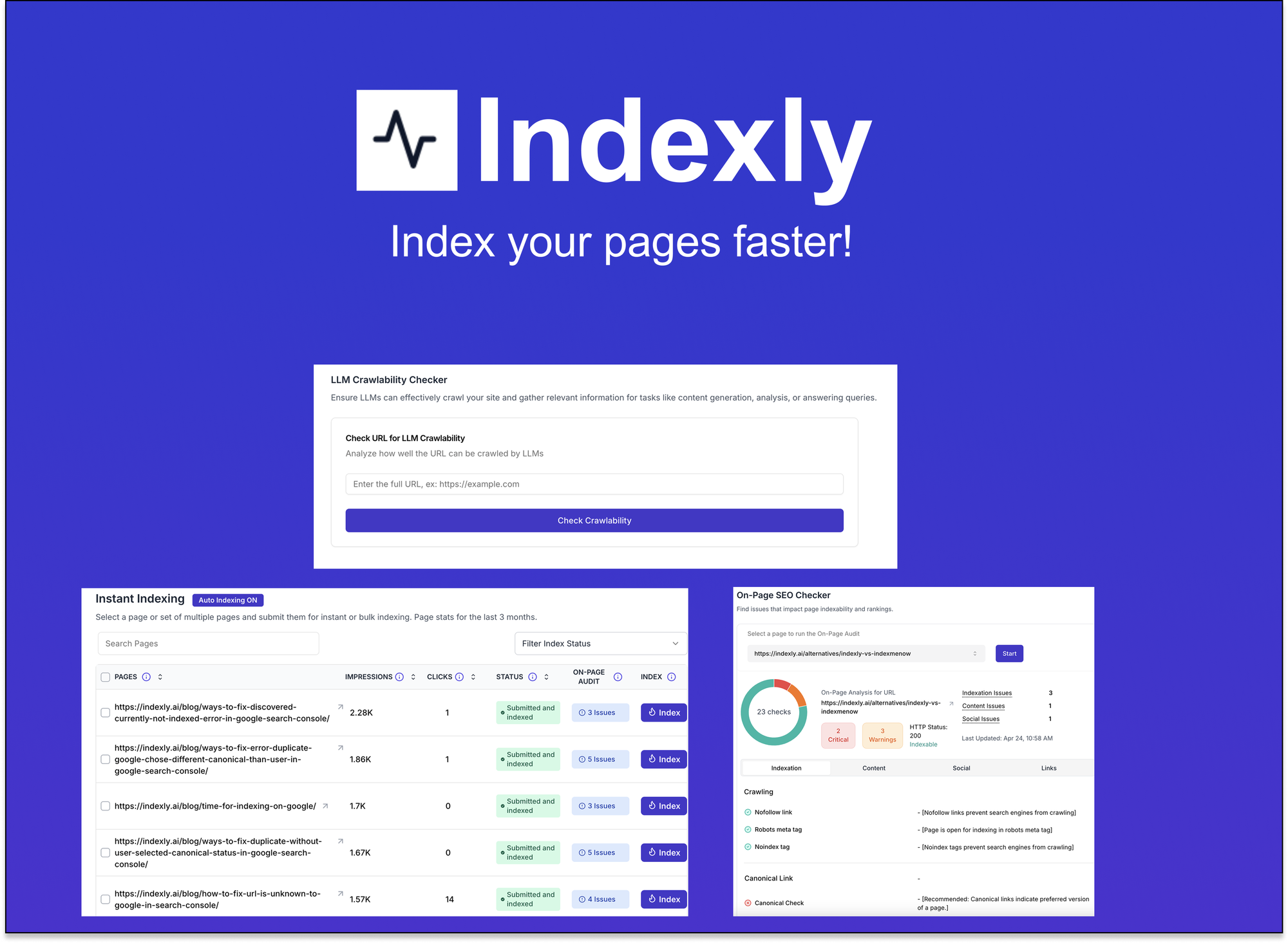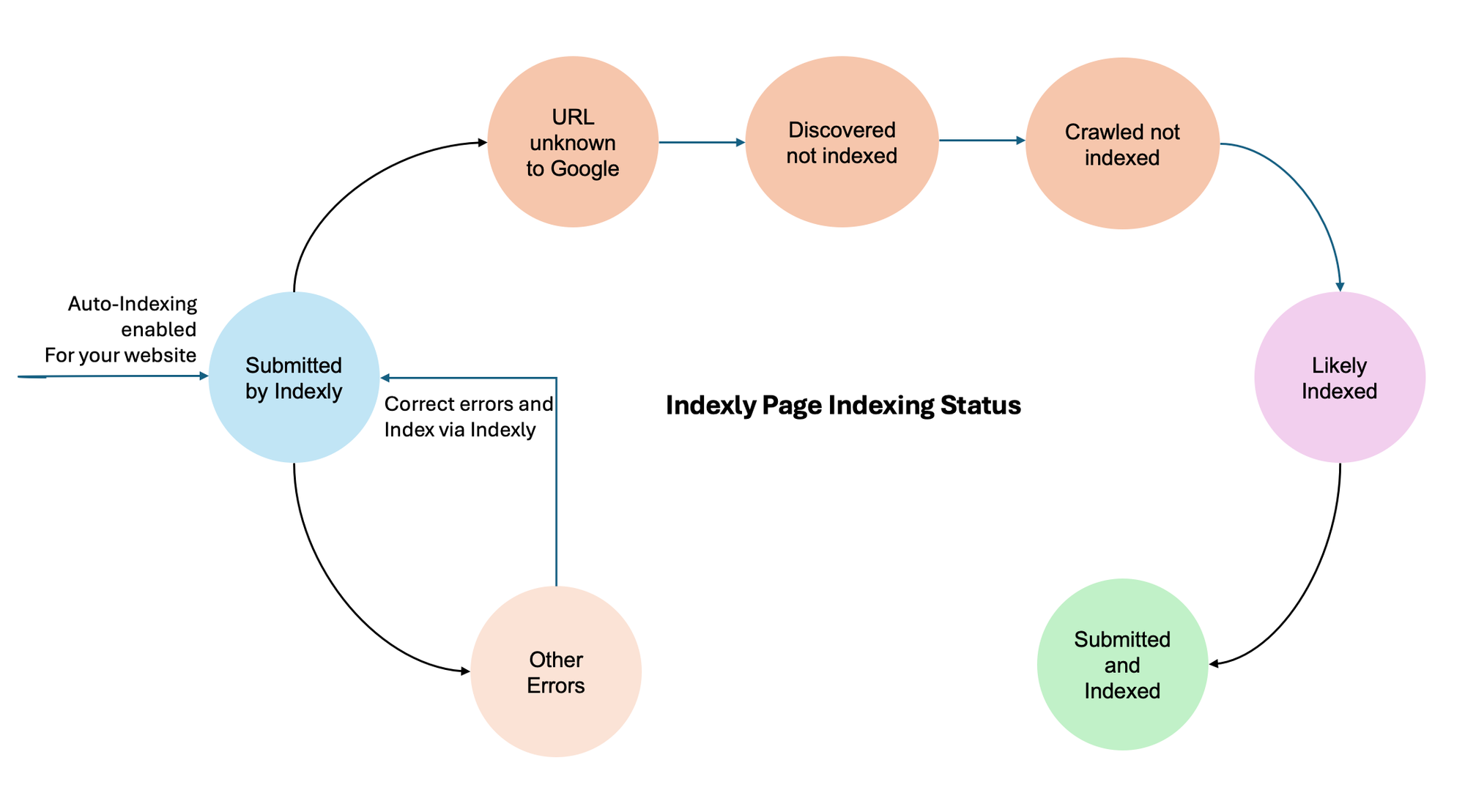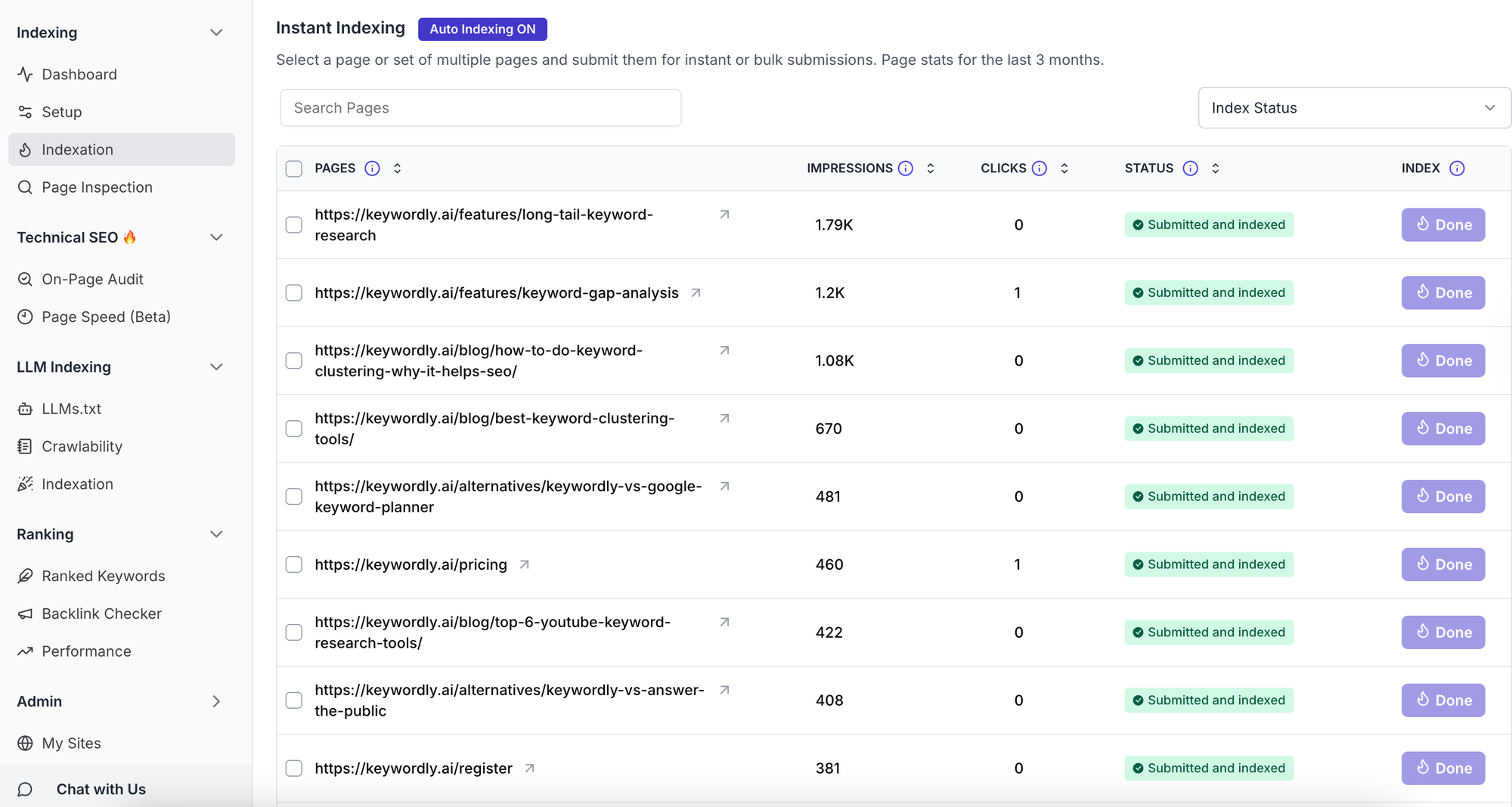Indexing Lifecycle of Website Pages - How to Address Indexing Issues and Improve Indexing Status with Indexly
Indexly updates the Indexing status of your webpages across their journey from getting submitted to getting indexed.

What is Indexing?
Indexing is when Google finds (crawls) your page, then processes the content of the page and puts it into the Google index (indexes it), where the page may be eligible to appear in Google Search results, as well as other Google services, like Discover.

Indexly
Indexly is your complete indexing and SEO visibility platform — Enable auto-indexing on Google, Bing & Yandex, LLMs (ChatGPT, Perplexity, Claude), Technical SEO, powerful Keyword Monitoring & user-friendly website analytics.
Indexly helps you index, monitor, and manage — so your content starts ranking when it matters most.
What is an Indexing status?
Once you have Enabled your website for Auto indexing with Indexly, it will submit your pages to Google for indexing and update the status of your webpage at various levels. There are 4 main statuses that you will see during your webpage indexing journey.

Submitted by Indexly
Any webpage created before connecting to Indexly will not display a status. When the Indexly job runs periodically, it will update the relevant status for the webpage.
Once the site is connected, Indexly will automatically detect and submit any new pages created after that to Google or Bing, based on your plan. The status for these new pages will then be updated to Submitted by Indexly.
Indexing Errors
In some cases, when you enable auto-indexing, your pages are "Submitted by Indexly". The page encounters Indexing issues due to several reasons listed.
Google doesn't index pages that are blocked by a robots.txt rule or noindex tag, or pages that are duplicates of other pages on your site. However, certain indexing errors are critical, as they directly impact your webpage's performance and the quality of its backlinks. These issues necessitate a thorough review and correction of the affected pages.
Once these fixes are made, it is essential to resubmit the pages using the Indexly Instant Indexing feature available in the dashboard to ensure they are properly indexed and optimised.

URL is unknown to Google
If a page has not been submitted via a sitemap, linked internally, or discovered through external links, it remains unknown to Google.
When Indexly submits a new page for indexing, Google will put it in "URL is unknown to Googlein"
Discovered, currently not indexed
The URL has been found by Google (e.g., through sitemaps or links) but hasn’t been crawled or indexed yet.
This could be due to low crawl priority, insufficient crawl budget, or content quality concerns.
Indexly recognises the submission request from Indexly and puts it to "Discovered - currently not indexed" (meaning it now knows a page like this exists).
Crawled is currently not indexed
- Googlebot has crawled the page, but is not yet included in the index.
- Reasons could include:
- Duplicate or thin content
- Low-quality signals
Technical issues (e.g., blocked by robots.txt or noindex tags
Later Google moves it to "Crawled - currently not indexed" (meaning it has already analyzed the page and checked the contents).
Likely Indexed
The next step is Indexly monitor page views, and if there are impressions, we say its likely indexed.
Once a page is submitted to Google, it gets indexed within a specified timeframe. However, Google Search Console manages numerous sites, so it takes a while for the webpage's status to be updated and not happen in real-time.
Indexly tracks certain signals (such as impressions) and updates the status of your webpage to Likely Indexed. This indicates that the site is indexed, even though the Google Search Console status hasn't been updated yet.
Submitted and Indexed
Once Indexly gets the updated status from Google Search Console about the indexing of your webpage, it updates the status of that webpage to Submitted and indexed. 😄

Queued by Indexly
One more status you might see on Indexly is - This happens when you submit a page for indexing using the Instant Indexing feature, but don't have enough indexing bandwidth or quota to index your page at the time of submission. Rest assured, in this case, Indexly will take your request for indexing at a later point.




